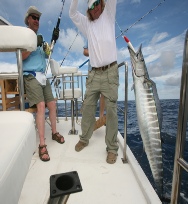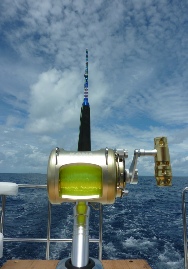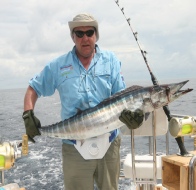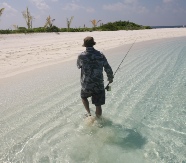© 2014 Gary Smith Fishing Ltd All Rights Reserved










Proudly Associated With


There are several simple methods of fishing with a float. Indeed this style of fishing will, no doubt, be the way most of us started out on our angling adventures.
This time we will cover a method of presenting bait on the bottom especially good for the margins of the stillwaters we find in our area.
The sliding float method is especially good when the swims are deeper than the length of your rod. A sliding rig has only a short length of line at the hook end of the float when casting. This is useful when there is either bankside vegetation or you need a little more weight to cast beyond a certain feature and wish to avoid tangles. The best float to use is a bodied waggler preferably with some loading to make sure the float does not slide up the line during the cast. The body of these floats are generally very buoyant which allows plenty of shot to be used to sink the bait quickly to the bottom. If you are fishing a swim amongst reeds or other such vegetation then this method holds the bait firm on the bottom avoiding it drifting and getting fast.
The waggler floats are usually marked with their weight and have an embedded swivel eye at the base for the line to pass through.
This time we will cover a method of presenting bait on the bottom especially good for the margins of the stillwaters we find in our area.
The sliding float method is especially good when the swims are deeper than the length of your rod. A sliding rig has only a short length of line at the hook end of the float when casting. This is useful when there is either bankside vegetation or you need a little more weight to cast beyond a certain feature and wish to avoid tangles. The best float to use is a bodied waggler preferably with some loading to make sure the float does not slide up the line during the cast. The body of these floats are generally very buoyant which allows plenty of shot to be used to sink the bait quickly to the bottom. If you are fishing a swim amongst reeds or other such vegetation then this method holds the bait firm on the bottom avoiding it drifting and getting fast.
The waggler floats are usually marked with their weight and have an embedded swivel eye at the base for the line to pass through.
Using your main line you need to use either a sliding stop knot or a float stop and tie or thread one of these up your line to somewhere around the depth you think the swim is that you are to fish. For newcomers to the sport who may not be familiar with some of the terms used, the swim is the stretch of river, or the part of a lake, that is being fished at that particular time. If you are experienced with knots then you can tie your own sliding stop knot around the line in the desired position. To ensure it does not catch on the rod rings when casting leave the ends around ten millimetres long. The knot or stop does need to be adjustable until the depth of the swim is attained. The stop knot or float stop is fed up the line followed by a bead. The bead needs to be small enough not pass over the knot or stop and large enough not to pass through the eye on the bottom of the float. Now pass the line end through the eye on the bottom of the float and select a hook to tie on the end of the line. The size of the hook is determined by what bait you wish to use. I use between sizes six and twelve in the lakes here for bait such as sweetcorn and luncheon meat. Barbless hooks are best as they cause less damage to the fish and means they can be released easily letting them return to their environment in the best condition possible after being caught. Now you need to attach some soft split shot below the float to make the line sink quickly. It is important to use a very soft shot as you will maybe need to adjust the position of the shot to get the float rig working correctly.
Take three AAA size shots to start with and position them together not too far below the float followed by a No8 shot maybe twenty centimetres above the hook. The shot you use should be easily pressed over the line with your fingers and thumbs not pliers. You will damage the line if you squeeze the shot tight on the line with pliers then try and slide it up or down. The shot should be soft enough to open with your nails and reposition when necessary.
So now load the bait and reel the line up the rod. The stop knot should pass through the rod rings easily and you will have your bead, float, shot and hook just below the rod tip ring. Overhead cast to where you want to be in your swim and wait for the float to run freely up the line until it reaches the stop. If the float lays down the knot is too high. If the float goes under the water the knot is too low. The float ideally needs to have the top section above the water so the bottom split shot is just on the bottom and the hook bait presented naturally. Wait for the float to dip and strike to set the hook. This method of float fishing is also good in harbours or marinas, if fishing is allowed in these areas of course.
So now load the bait and reel the line up the rod. The stop knot should pass through the rod rings easily and you will have your bead, float, shot and hook just below the rod tip ring. Overhead cast to where you want to be in your swim and wait for the float to run freely up the line until it reaches the stop. If the float lays down the knot is too high. If the float goes under the water the knot is too low. The float ideally needs to have the top section above the water so the bottom split shot is just on the bottom and the hook bait presented naturally. Wait for the float to dip and strike to set the hook. This method of float fishing is also good in harbours or marinas, if fishing is allowed in these areas of course.
Copyright © Gary Smith
Back
| Address |
| Contact Us |
